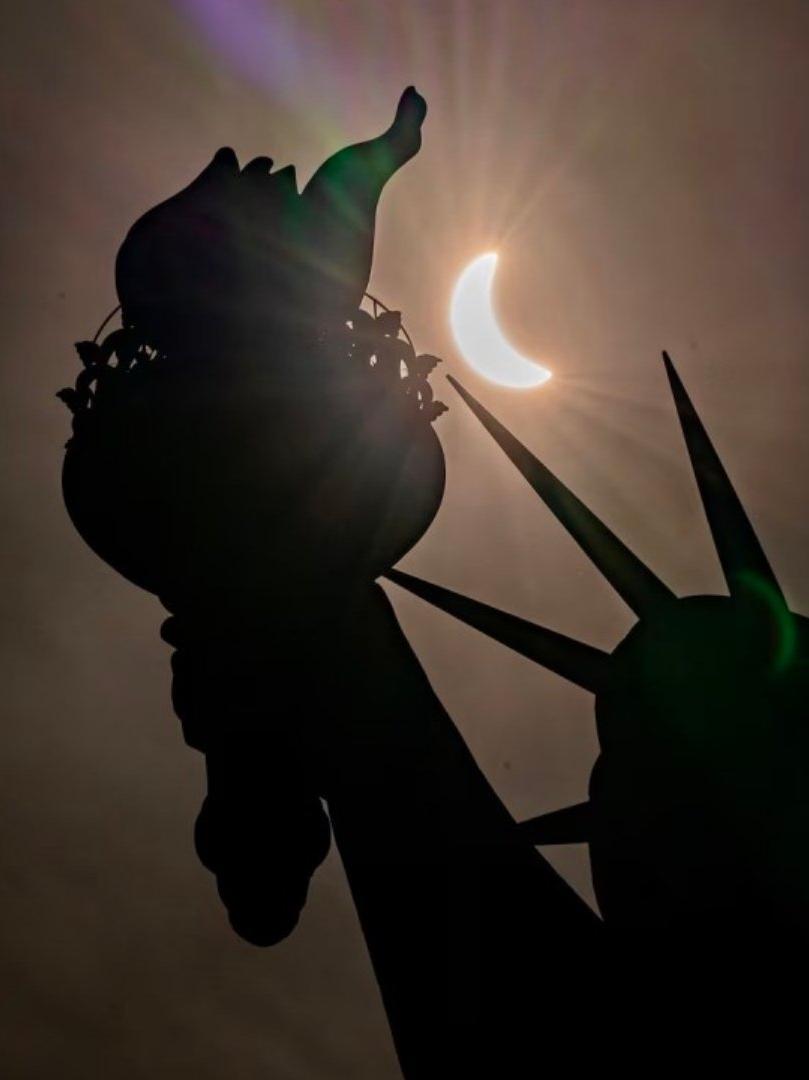For more than four hours, the moon’s shadow ate into the sun’s orange-yellow sphere, casting a shadow across the day. This cosmic wonder captivated millions of skygazers, from the beaches of Mexico across the plains of Texas to the rugged coast of Newfoundland, Canada.
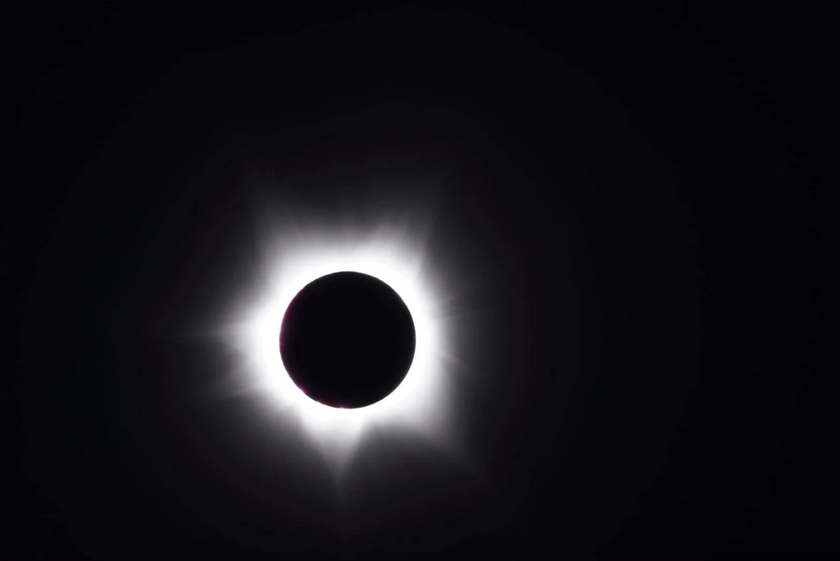
North Americans flock to see "once-in-a-century" solar eclipse
Across the North American continent, from the United States, Canada to Mexico, people spent the afternoon of April 8th with excitement and delight facing a special astronomical event - the last total solar eclipse over this country for the largest period until the 2040s.

People gather at the National Mall in Washington, DC to watch the solar eclipse (Photo: Reuters)
From the lush green coast of Mexico, across the vast valleys of the United States and into the icy lands of Canada, the power of the Moon’s shadow has spread, plunging vast swaths of land into total darkness. In the daytime sky, the Moon’s shadow has dimmed the light of the Sun, leaving only the silvery glow of its smooth halo.

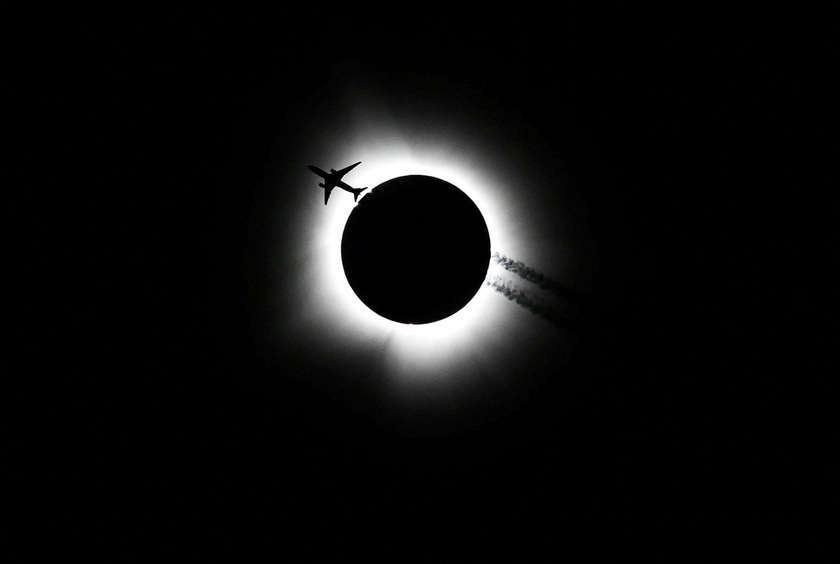
An airplane passes near a total solar eclipse during the Hoosier Space Celebration at Memorial Stadium in Bloomington, Indiana (Photo: Reuters)

Total solar eclipse in Plano, Texas, USA (Photo: Reuters)
For more than four hours, minute by minute, second by second, people witnessed the magical spectacle as the shadow of the Moon slid across the Sun, making a grand journey from southwest to northeast, passing through unique natural landscapes such as Niagara Falls and the pristine coastlines of Newfoundland. It was not only an astronomical event, but also a spiritual and magical experience for those lucky enough to witness it.
Mazatlan, Northern Mexico was the first major city in North America to welcome a total solar eclipse at 2:07 pm on April 8 (local time) and the phenomenon lasted for 4 minutes and 28 seconds.
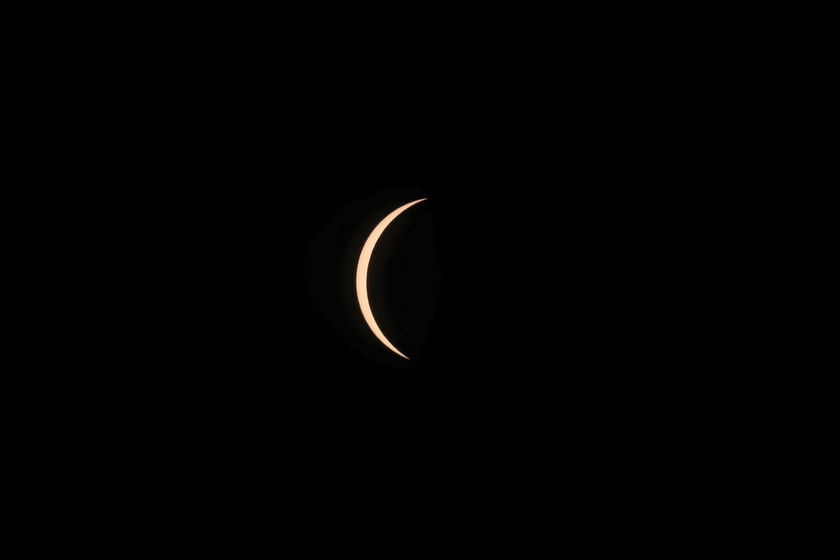
Partial solar eclipse seen from Mazatlan, Mexico (Photo: Reuters)
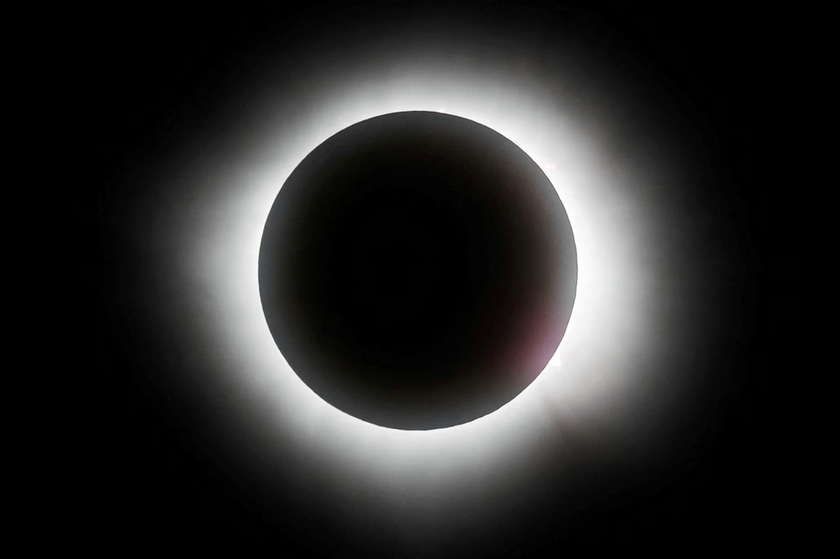
Image seen from Mazatlan, Mexico (Photo: Reuters)
Thousands of people packed the walkways and sat wherever they could on the beaches of Mazatlan to watch the eclipse. The crowd cheered, clapped and whistled as the totality of the eclipse was observed.

People watch the solar eclipse in Torreón, Mexico (Photo: Reuters)
Many couples in the US have chosen to get married on the day of the total solar eclipse, with some cities even holding mass weddings. Zach Horrall and Corlan McCollum, a couple from Indianapolis, Indiana, decided to change their wedding plans when they learned the local area would witness a total solar eclipse. They held an outdoor wedding ceremony that lasted 3 minutes and 45 seconds, hoping that guests would focus on the special astronomical event rather than their celebration.
Space.com says that when a total solar eclipse lasts longer than 4 minutes, it should definitely be considered special. Because, in the past 100 years, from 1925 to 2024, the maximum duration of the 75 total solar eclipses that scientists have surveyed has averaged 3 minutes and 13 seconds. The upcoming total solar eclipse on March 8 is forecast to reach its maximum duration of 4 minutes and 28.2 seconds in north-central Mexico.





